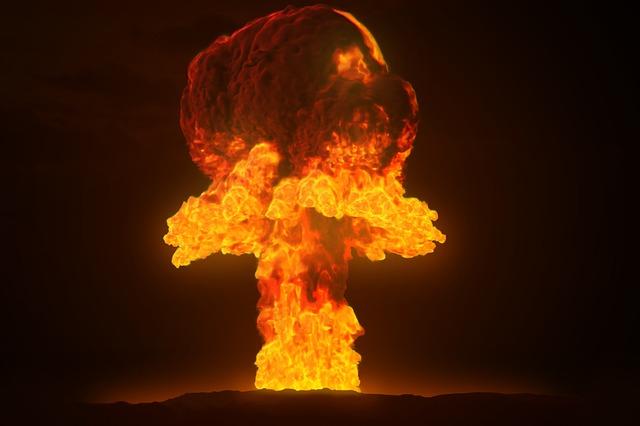The nuclear ban cometh … unfortunately
Posted By Rod Lyon on July 3, 2017 @ 14:30

In New York, negotiations towards a nuclear weapons ban treaty—involving approximately 130 countries plus sundry civil society groups—are drawing rapidly to a close. A second draft [1] (PDF) of the text is already under discussion. In the end, supporters of a ban will have their day. So it now seems a foregone conclusion that the UN will soon open for signature a treaty banning nuclear weapons, which would enter into force 90 days after 50 signatories have ratified it (Article 16.1).
Does that mean nuclear disarmament is close? No. In fact, the ban treaty probably won’t remove a single nuclear weapon from the face of the earth. No nuclear weapon state is attending the negotiations. And, of all those countries known to enjoy an extended nuclear deterrence guarantee, only the Netherlands is attending. Disarmament aficionados aren’t dismayed though: they get to criticise the nuclear weapon states and their allies for not attending, and to write the treaty text that best codifies their own understanding of ‘international norms’. Problems that might be genuine difficulties in any real nuclear disarmament exercise—like verifying dismantlement, punishing breakout, or designing new stable force balances at key strategic fulcra—are either postponed to a later date or avoided altogether.
In fact, the treaty’s better seen as a normative commitment than as a practical aid to a nuclear-free world. That shows up straight away in the preamble—a treaty of 21 articles is preceded by 24 paragraphs in which the signatories describe the many ways in which they are holier than thou. Some of the strongest criticisms the Australian government has received for its non-attendance at the negotiations have come from those motivated by the sentiments underpinning those 24 paragraphs—even though attendees have no monopoly on being ‘mindful of the risks posed by the continued existence of nuclear weapons’.
Still, with a nuclear ban treaty probably imminent, it’s not too soon to begin asking how Australia should respond to invitations to sign the final version. In answering that question, Canberra has two factors to weigh. Does the treaty improve Australian security? And does the treaty help or hinder in relation to the existing arms control architecture?
Let’s start with the security question. The Australian government declined to take part in the negotiations, because it believed it could not—in good faith—both draft a treaty banning nuclear weapons and continue to rely upon those weapons to make direct and indirect contributions to Australian security. I don’t see how that calculation changes once an actual treaty exists. It makes no sense to delegitimise weapons that help to underpin key global and regional balances. Nor does it make sense to pretend that those same weapons are—like chemical weapons and anti-personnel landmines—merely peripheral to broader global security, as some of the ban’s supporters argue. The doctrine of nuclear deterrence might not win many popularity contests. But it’s wrong to view it as an optional extra—like a plug-in to a computer game.
Narrowly interpreted, Article 1 of the treaty doesn’t ban nuclear deterrence, because it doesn’t ban the threat of nuclear use. But it does ban developing, producing, manufacturing, acquiring, possessing, stockpiling, transferring, testing and actually using nuclear weapons. Folks, nuclear deterrence doesn’t happen in a world devoid of nuclear weapons or the prospect of their use. Moreover, the same article explicitly prohibits stationing, installation or deployment of nuclear weapons on the territory of any state party. Article 1.1.g forbids a state party from seeking or receiving ‘any assistance, in any way, from anyone to engage in any activity’ prohibited under the treaty. On a straight reading, Article 1 seems to kill off both nuclear deterrence and extended nuclear deterrence. Nearly 40 US allies and partners rely on extended nuclear deterrence, including Australia; killing it off isn’t a good idea.
What about the second question, then—the effect of a ban treaty upon the existing arms control architecture? Here the answer’s similarly unsatisfying. Readers wanting a quick overview of the relationship between the ban and existing agreements might well have a look at Jon Wolfsthal’s posts (here [2] and here [3]) at Arms Control Wonk. Overall, the ban makes for an uncomfortable fit both with what has gone before and with what we should be aiming at if we really intend to take nuclear disarmament seriously.
But there’s a different point that also needs to be made. Australian foreign policy sits firmly in a tradition of British empiricism. We’ve long championed a step-by-step approach to nuclear arms control, one which engages the nuclear powers and accepts that arms control must pull in tandem with geopolitical realities. The ban treaty isn’t like that: it’s big on grand declarations and small on practicalities. It’s a treaty written by the nuclear dispossessed with a cavalier disregard for geopolitics—a treaty meant to be shoved down the throats of those states recognised as legitimate nuclear weapons powers under the Nuclear Non-Proliferation Treaty. Australia’s signature would signal a paradigm shift in our approach to arms control, one I suspect we’re not ready to make.
So, will Australia sign up to a nuclear weapons ban treaty? In truth, I think there’s little prospect we’ll do so—not because we don’t believe in the ultimate goal, but because the treaty itself is probably going to create more problems than it solves. A decision to sign shouldn’t rest upon the questions of whether nuclear weapons are morally troubling or whether nuclear deterrence is popular. It should rest upon harder questions of national interest. I’d argue that Australia would be better off not signing.
Article printed from The Strategist: https://aspistrategist.ru
URL to article: /nuclear-ban-cometh-unfortunately/
URLs in this post:
[1] second draft: https://s3.amazonaws.com/unoda-web/wp-content/uploads/2017/06/A-CONF.229-2017-CRP.1-Rev.1.pdf
[2] here: http://www.armscontrolwonk.com/archive/1203255/the-1st-nuclear-ban-draft-is-out/
[3] here: http://www.armscontrolwonk.com/archive/1203455/second-time-is-not-a-charm-for-the-nuclear-ban-treaty/
Click here to print.